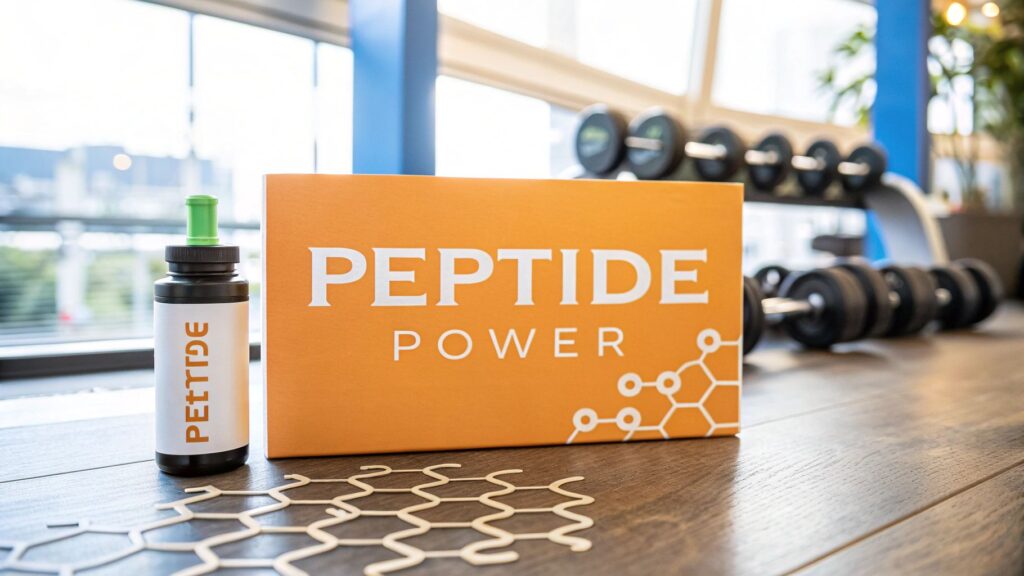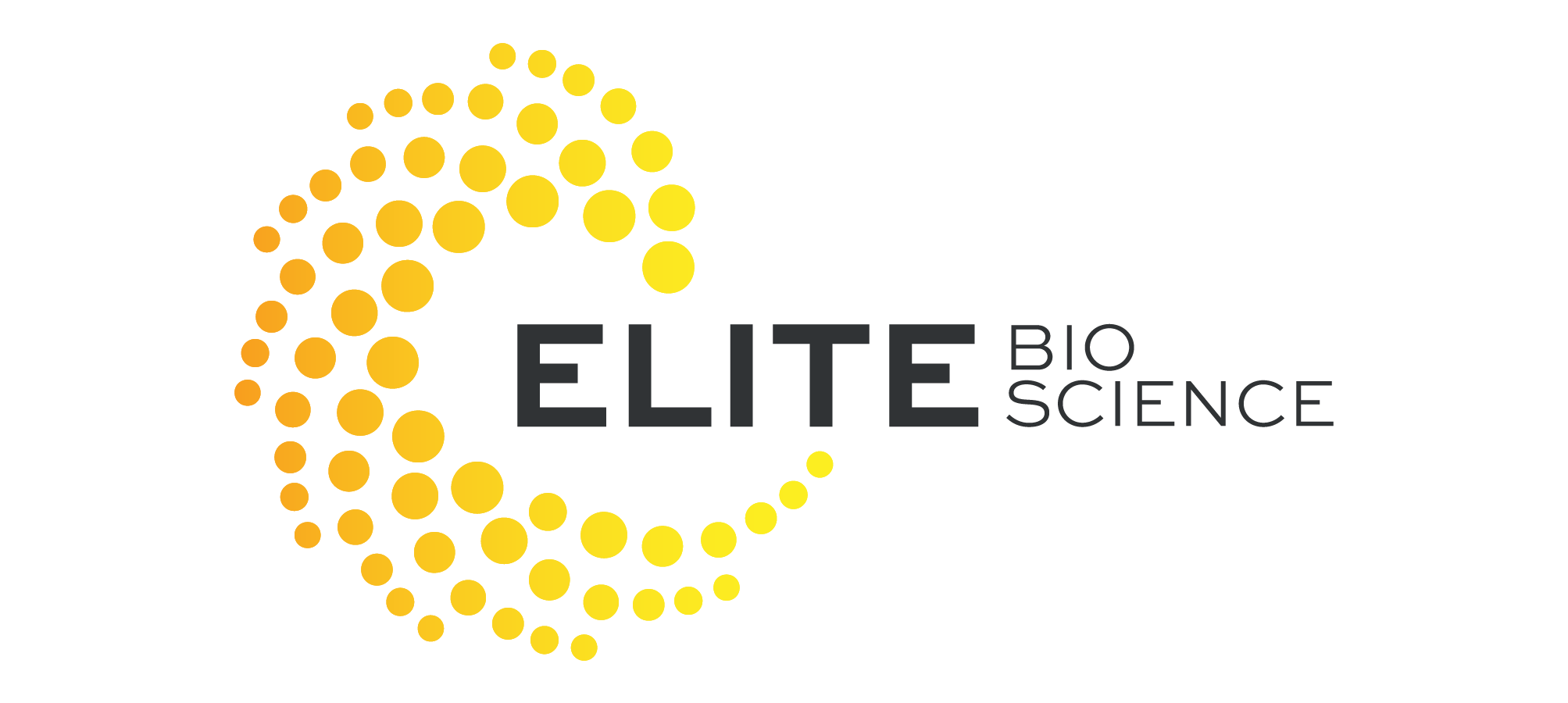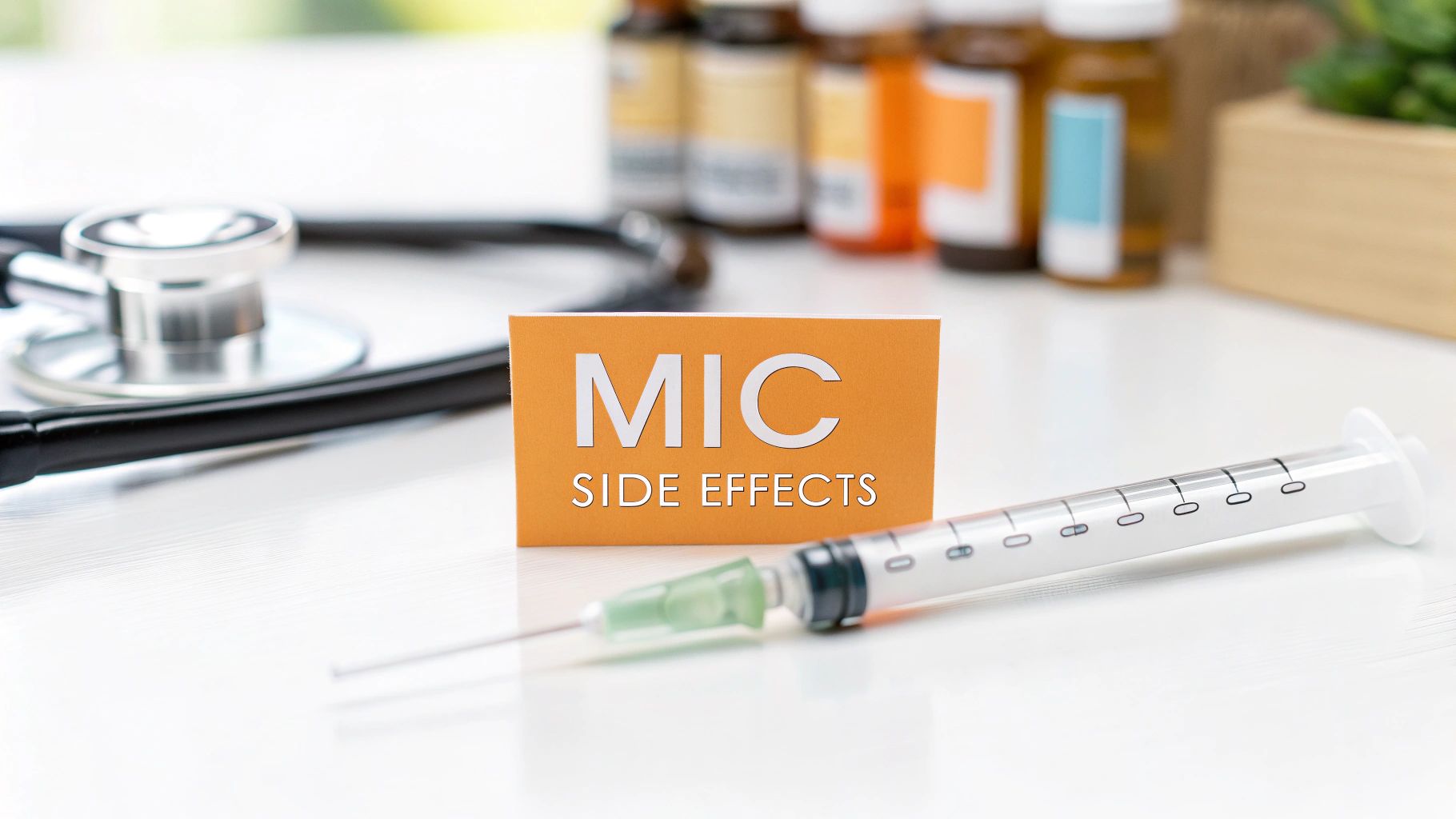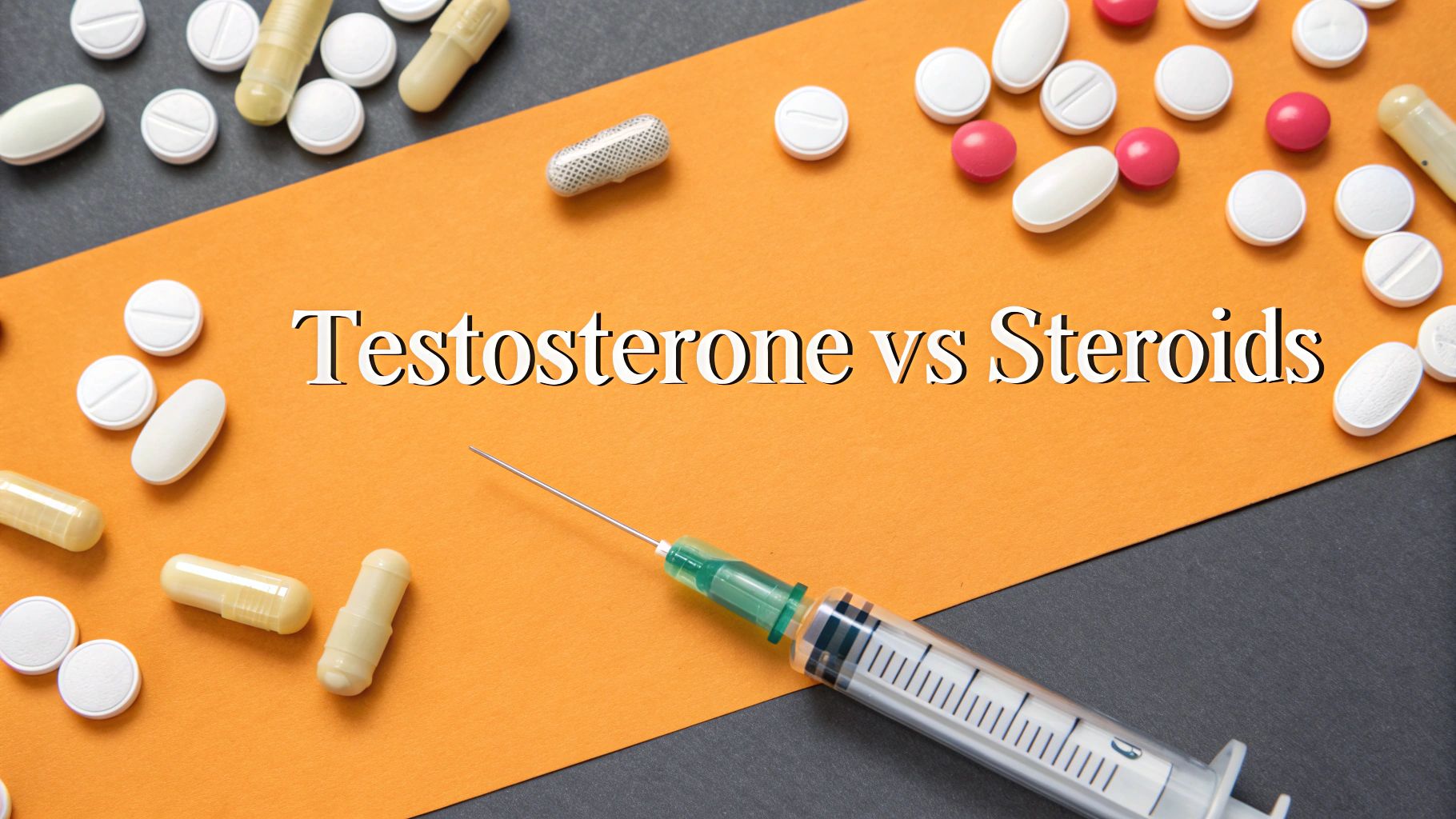What Is Peptides for Bodybuilding? Benefits & How They Work

When you're first trying to get your head around what peptides are in bodybuilding, don't overcomplicate it. Think of them as highly specific messengers. They're short chains of amino acids—the same stuff that builds protein—but their real magic lies in delivering targeted instructions to your body.
They can tell your cells to do very specific jobs, like kickstart muscle repair, burn stubborn fat, or signal the release of more growth hormone.
Decoding Peptides for Muscle Growth
Peptides have become a huge topic in fitness and bodybuilding circles because they operate differently from your typical supplements. A protein shake, for example, just dumps a load of raw materials into your system. Peptides, on the other hand, act more like a key designed to unlock a very specific biological door, triggering a precise action that perfectly aligns with your goals.
It's this targeted approach that has everyone paying attention.
Imagine your body's potential is a massive control panel with hundreds of switches. Most supplements are like hitting a big button that flips a bunch of general switches all at once. Peptides are engineered to flip one, single switch with pinpoint accuracy.
Think of it this way: Protein is the pile of bricks you need to build a house. Peptides are the foreman on the job site, pointing and telling the crew exactly where to lay each brick for maximum strength and efficiency.
Why Are They So Popular
This ability to send direct commands is what makes peptides such a powerful tool for anyone serious about their physique. You're not using a shotgun and hoping for the best; you're using a laser-guided strategy.
This precision helps dial in several key areas crucial for bodybuilders:
- Accelerated Muscle Repair: Certain peptides can signal cells to speed up the healing process after you’ve torn them down in the gym, which means less downtime and faster growth.
- Enhanced Growth Hormone Release: Many of the most popular peptides work by stimulating your pituitary gland to produce more of its own natural growth hormone.
- Targeted Fat Loss: Specific peptides can help fire up your metabolism, encouraging your body to tap into stored fat for energy instead of burning muscle.
The buzz around peptides isn't just gym talk; it's backed by market trends. The peptide supplements sector is currently valued at around USD 4.1 billion and is projected to blow past USD 11.2 billion by 2035. This explosion is driven by athletes looking for that extra edge in performance and recovery. You can find more details about these market trends in this insightful report.
Ultimately, getting the basics down is your first step. For a much deeper dive into how these compounds work on a biological level, you'll want to check out our complete guide on what peptides are in bodybuilding.
How Peptides Signal Your Body to Build Muscle
Let’s get out of the lab and talk about what actually happens in your body. At their core, peptides are powerful communicators—they’re basically tiny messengers that deliver very specific instructions. Think of your body as having a master control panel for muscle growth; peptides are the precise codes you enter to flip the most important switches.

Many of the go-to peptides in bodybuilding work by interacting with your pituitary gland. This tiny gland at the base of your brain is the command center for producing Human Growth Hormone (HGH), a major driver of muscle gain and fat loss. Peptides don't introduce foreign hormones; they just give your body a gentle nudge to produce more of its own.
The Key and Lock Analogy in Action
We talked about peptides being like a specific key for a specific lock. Let's run with that. Certain peptides, like Growth Hormone Releasing Hormones (GHRHs), are shaped perfectly to fit into receptors on your pituitary gland.
When they slide into these receptors and "unlock" them, it sends a powerful signal telling the gland to release a pulse of HGH into your system. This one action kicks off a whole cascade of events that are directly tied to your goals in the gym.
This signaling process is incredibly precise, and it leads to several key outcomes:
- Boosted Protein Synthesis: More HGH tells your muscle cells to get hungry for amino acids, pulling them in to build new muscle tissue much more efficiently.
- Faster Cellular Repair: Hard workouts mean damaged muscle fibers. Peptides help speed up the repair crew, letting you recover faster so you can get back to training sooner and harder.
- Reduced Inflammation: Some peptides even have anti-inflammatory effects, helping to calm down the post-workout inflammation that can slow down recovery and growth.
This natural stimulation is a big reason why so many athletes are looking into what peptides can do for bodybuilding—it’s all about working with your body's existing machinery.
The Biological Domino Effect for Growth
Once HGH is released, it doesn’t stop there. It travels to your liver, where it signals the production of another heavy-hitter: Insulin-Like Growth Factor 1 (IGF-1). IGF-1 is directly responsible for many of the muscle-building effects we credit to growth hormone, including the creation of new muscle cells.
Think of this whole process as a biological domino effect. The peptide is the first push. It tips over the HGH domino, which then knocks over the IGF-1 domino, ultimately leading to more muscle growth and better repair.
This intricate signaling pathway shows just how sophisticated these compounds are. Their effectiveness has sparked major interest far beyond the fitness world, with peptides now a huge deal in pharmaceutical and therapeutic markets. And as biotechnology gets better, we're seeing more targeted and efficient peptide products, many of which find their way into sports nutrition. You can explore more about the growth of peptide therapeutics and its wider impact.
Once you understand how these signals work, it’s clear that peptides aren’t some magic pill. They are sophisticated tools that amplify the results of all the hard work you’re already putting in at the gym and in the kitchen.
Popular Bodybuilding Peptides And Their Functions
Walking into the world of peptides can feel a bit overwhelming with all the different compounds out there. The good news? For bodybuilding, you can simplify things a lot. Most peptides fall into just a few key categories based on what they're designed to do.
Once you understand these groups, it’s much easier to see how each one fits a specific goal—whether you’re trying to build serious mass, get shredded, or just heal a nagging injury. Instead of memorizing a long list of names, let’s break them down by their mission.
Most peptides used by athletes belong to one of three main camps: Growth Hormone Releasing Hormones (GHRHs), Ghrelin Mimetics (also known as GHRPs), and Recovery Peptides. Each group takes a different path to help you get where you want to go.
The infographic below gives you a clean visual breakdown of these categories and some of the heavy hitters in each one. It helps make sense of a complex landscape.

This visual shows how specific peptides like CJC-1295 or BPC-157 fit into the bigger picture, making it simpler to pick a compound that aligns with your primary goal.
To make this even clearer, the table below neatly organizes the most common peptides by their function and what they help you achieve in the gym.
Common Bodybuilding Peptides and Their Primary Functions
A summary of popular peptides, categorizing them by their main mechanism of action and intended bodybuilding benefits.
| Peptide Category | Example Peptides | Primary Bodybuilding Goal |
|---|---|---|
| Growth Hormone Releasing Hormones (GHRHs) | CJC-1295, Mod GRF 1-29 | Sustained muscle growth and recovery |
| Ghrelin Mimetics (GHRPs) | Ipamorelin, GHRP-6, GHRP-2 | Rapid HGH increase for mass & fat loss |
| Recovery & Healing Peptides | BPC-157, TB-500 | Accelerated repair of muscle & connective tissue |
This table serves as a quick reference, but let's dive into what makes each category unique and how these peptides actually work.
Growth Hormone Releasing Hormones (GHRHs)
Think of GHRHs as the main signal telling your pituitary gland to release a steady, natural pulse of Human Growth Hormone (HGH). A GHRH is like turning up the volume on your body’s own HGH factory, creating a strong but controlled release.
A prime example is CJC-1295, especially the version with DAC (Drug Affinity Complex). The DAC gives it a much longer half-life, meaning it can keep HGH levels elevated for days. This makes it a go-to for long-term muscle growth and recovery plans.
Ghrelin Mimetics (GHRPs)
Ghrelin Mimetics, or Growth Hormone Releasing Peptides (GHRPs), use a different tactic. They mimic ghrelin, the "hunger hormone," which also happens to be a powerful trigger for HGH release. When a GHRP hits its receptor, it unleashes a strong, immediate pulse of growth hormone.
- Ipamorelin: This is arguably the most popular GHRP because it provides a clean, significant HGH release with minimal side effects. It doesn't really mess with cortisol or prolactin, making it a favorite among bodybuilders.
- GHRP-6 and GHRP-2: These are also very effective but are notorious for causing a major spike in hunger. That can be a great tool during a bulk but a real pain when you're trying to cut.
A common and highly effective strategy is to "stack" a GHRH with a GHRP. Combining CJC-1295 with Ipamorelin, for example, creates a synergy that produces a much larger HGH release than either compound could ever achieve on its own.
Potent Recovery Peptides
This final category is less about directly cranking up HGH and more about fast-tracking your body’s natural healing systems. For any athlete who trains hard, recovery is just as important as the work itself. Nagging injuries will kill your progress, and that's where these peptides truly shine.
The undisputed champion of recovery peptides is BPC-157 (Body Protection Compound-157). It was first studied for its incredible gut-healing abilities but has since shown a remarkable talent for speeding up the repair of muscles, tendons, ligaments, and even bone. Athletes often use it to bounce back from strains and sprains in record time.
Another key player is TB-500, which promotes the growth of new blood vessels and helps cells travel to the injury site. This floods the area with nutrients and helps clear out waste, creating the perfect environment for rapid healing. For a deeper look at how these compounds are used in practice, you can explore the various applications of peptide therapy for muscle growth. This can give you a clearer picture of how these different peptides are put to work.
What You Can Actually Expect: The Real-World Benefits
Let's move past the lab-coat science and talk about what really matters: the results you can see in the mirror and feel in the gym. While the biology is fascinating, bodybuilders and athletes are drawn to peptides for the tangible edge they can provide. These aren't magic bullets; they're tools to amplify the rewards of your hard work and dedication.

Whether it’s finally smashing through a strength plateau or healing that nagging shoulder injury that’s been holding you back, peptides can offer a strategic advantage when they're properly folded into a solid training and nutrition program.
Accelerated Muscle Growth and Strength
This is the big one. It's the number one reason bodybuilders start digging into what peptides are for bodybuilding. By encouraging your body to naturally produce more Growth Hormone (HGH) and IGF-1, certain peptides create the perfect internal environment for building new muscle.
This hormonal shift translates directly into:
- Enhanced Protein Synthesis: Your body becomes way more efficient at using the protein from your diet to repair and rebuild muscle fibers after a brutal workout.
- Increased Muscle Hypertrophy: Peptides can help your existing muscle fibers grow larger, leading to noticeable gains in both size and strength over time.
- Potential for Hyperplasia: Some evidence suggests the pathways these peptides stimulate might even help create entirely new muscle cells, which could boost your long-term potential for growth.
Think about that frustrating plateau where your bench press hasn't budged in months. A well-timed peptide protocol could dial up your body's recovery and growth signals, giving you the boost you need to finally push past that sticking point and add more plates to the bar.
Dramatically Faster Recovery Times
For any serious athlete, recovery is king. You don't get bigger in the gym; you get bigger when you rest and repair. Peptides like BPC-157 and TB-500 are legendary for their ability to slash recovery time, getting you back to training at 100% intensity, faster.
This isn't just about feeling less sore. It’s about speeding up the microscopic repair of muscle tears and reducing the inflammation that slows you down. This powerful recovery advantage is a key reason the peptide supplements market, valued at roughly USD 2.67 billion, is expected to hit USD 4.10 billion by 2032. More athletes are turning to these compounds to keep up with demanding training schedules. You can read the full market research about peptide supplements to see just how quickly this trend is growing.
Enhanced Fat Loss for a Leaner Physique
Many of the peptides that release growth hormone also kick your metabolism into a higher gear. They signal your body to start using stored fat as its go-to energy source, a process called lipolysis. This is a massive advantage, especially when you're in a cutting phase.
It means you can shed body fat much more effectively while holding onto the hard-earned muscle you’ve built. The end result is that leaner, more chiseled, and defined look every bodybuilder is chasing.
Improved Joint and Connective Tissue Health
Let’s be real—heavy lifting is tough on your joints, tendons, and ligaments. Over time, it takes a toll. Peptides like BPC-157 are incredible at repairing these vital connective tissues. By dialing down inflammation and kickstarting cellular repair, they help keep you healthy and resilient, preventing the kind of injuries that could sideline you for weeks or even months.
Navigating Safety and Potential Side effects
While the benefits of peptides are exciting, it's just as important to understand the other side of the coin. An informed, responsible mindset is your best defense for navigating this world safely. Like anything that influences your body's chemistry, peptides come with potential side effects you need to be aware of.
Most of the commonly reported issues are pretty minor and often tied to the injection itself or your body's initial reaction. This can look like temporary irritation, redness, or a bit of swelling at the injection site. Some people also report mild water retention or a tingling feeling in their hands and feet, which is often linked to the rise in growth hormone levels.
Understanding the Risks and Legal Landscape
Beyond these immediate physical reactions, there are bigger things to consider. One of the greatest challenges in this space is the quality and purity of the products out there. Many peptides are sold online under the label "for research purposes only," putting them in a tricky legal gray area. This means they aren't regulated with the same strictness as pharmaceuticals, which has created a market where product quality can be all over the map.
This is where your sourcing becomes absolutely critical. An impure or incorrectly dosed product doesn’t just mean you won't get results; it can be flat-out dangerous. To avoid this, you have to find highly reputable suppliers who provide third-party lab testing to prove the purity and concentration of their compounds.
The biggest risk with peptides often isn't from the compounds themselves, but from the unregulated market they exist in. Your number one job should always be to verify the quality and legitimacy of your source.
The Non-Negotiable Step: Medical Consultation
This brings us to the single most important piece of advice: you must consult with a qualified healthcare professional before starting any peptide protocol. A knowledgeable doctor can look at your health history, understand your goals, and help you figure out if peptides are a safe and appropriate option for you. They can also guide you on proper dosing and keep an eye on your progress.
Trying to self-prescribe based on what you read on online forums is a huge gamble with your health. Professional medical oversight ensures you’re making responsible choices that support your long-term well-being and helps you understand how to recover properly. For more on that, our guide on how to improve muscle recovery offers more context on safe healing practices. Ultimately, this partnership with a professional is a non-negotiable for anyone serious about using peptides safely and effectively.
Your Questions Answered: Getting Clear on Peptides
Thinking about any new approach to performance naturally brings up questions. To wrap things up, let's tackle the most common ones that come up when people first start looking into bodybuilding peptides. Getting straight answers to these will help you build a solid foundation of understanding.
Are Peptides A Type Of Steroid?
Not at all. Peptides and anabolic steroids are two completely different classes of compounds. It's like comparing a light switch to the entire power grid—both affect the lights, but they work in vastly different ways.
Peptides are short chains of amino acids that act like tiny messengers, signaling your body to perform specific tasks, like producing more of its own growth hormone. Steroids, on the other hand, are synthetic versions of hormones (usually testosterone) that directly flood your system. They have different chemical structures, operate through separate biological pathways, and come with entirely different safety considerations.
How Long Until You See Results From Peptides?
This is a marathon, not a sprint. While some people report feeling better within a few weeks—noticing things like deeper sleep or quicker recovery after a tough workout—visible, measurable changes take time.
For noticeable improvements in muscle mass, body composition, and strength, you’ll typically need to stick with a consistent protocol for at least 8 to 12 weeks. The speed and scale of your results will always depend on the specific peptide you're using, your dosage, and—most importantly—the quality of your diet and the intensity of your training.
What Is The Most Common Way To Take Peptides?
The gold standard for most bodybuilding peptides is subcutaneous injection, which means injecting the compound into the fatty tissue just under the skin. This isn't just a preference; it's a necessity.
If you were to swallow a peptide, your digestive system would break it down and destroy it before it ever reached your bloodstream. The injection bypasses that entire digestive roadblock, ensuring the full dose gets absorbed for maximum effect. This method does require strict attention to sterile procedures, like properly mixing the peptide with bacteriostatic water, using clean needles, and rotating injection sites.
Can You Combine Different Peptides?
Yes, and it’s a very common strategy known as "stacking." The idea is to combine peptides that work together to create a synergistic effect, where the combined result is greater than what each could achieve on its own.
A classic example is pairing a GHRH like CJC-1295 with a GHRP like Ipamorelin. The GHRH tells the pituitary gland how much growth hormone to release, while the GHRP tells it to release it now. Together, they trigger a much more powerful and natural-feeling pulse of HGH. However, stacking is definitely a more advanced approach that requires a solid grasp of how each compound works and interacts.
At Elite Bioscience, we provide third-party lab-tested therapies to ensure you receive the highest quality products for your health and performance goals. Explore our solutions and take the next step with confidence.
QUICK SEARCH
Make an account today to start your journey towards a better and healthier lifestyle.






